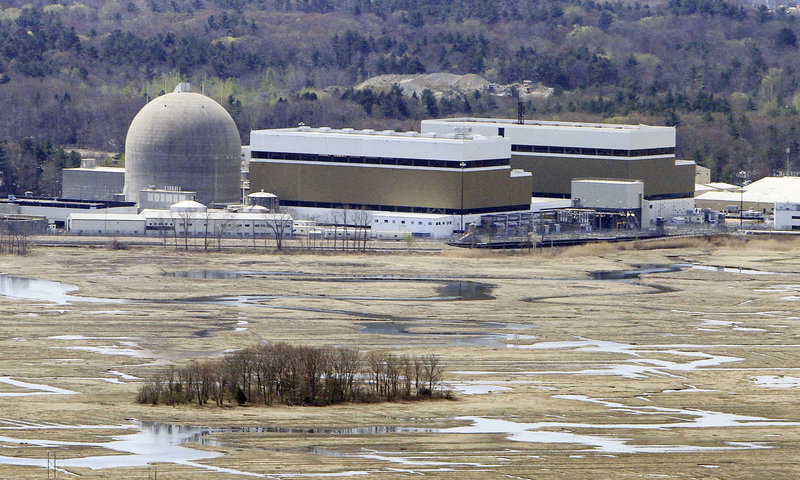WASHINGTON – The risk that an earthquake would cause a severe accident at a U.S. nuclear plant is greater than previously thought, 24 times as high in one case, according to an AP analysis of preliminary government data. The nation’s nuclear regulator believes a quarter of America’s reactors may need modifications to make them safer.
The threat came into sharp focus last week, when shaking from the largest earthquake to hit Virginia in 117 years appeared to exceed what the North Anna nuclear power plant northwest of Richmond was built to sustain.
The two North Anna reactors are among 27 in the eastern and central U.S. that a preliminary Nuclear Regulatory Commission review has said may need upgrades. That’s because those plants are more likely to get hit with an earthquake larger than the one their design was based on. Just how many nuclear power plants are more vulnerable won’t be determined until all operators recalculate their own seismic risk based on new assessments by geologists, something the agency plans to request later this year. The NRC on Thursday issued a draft of that request for public comment.
The review, launched well before the East Coast quake and the Japan nuclear disaster in March, marks the first complete update to seismic risk in years for the nation’s 104 existing reactors, despite research showing greater hazards.
The NRC and the industry say reactors are safe as they are, for now. But emails obtained in a more than 11,000-page records request by The Associated Press show that NRC experts were worried privately this year that plants needed stronger safeguards to account for the higher risk assessments.
The nuclear industry says last week’s quake proved reactors are robust. When the rumbling knocked out off-site power to the North Anna plant in Mineral, Va., the reactors shut down and cooled successfully, and the plant’s four locomotive-sized diesel generators turned on. The quake also shifted about two dozen spent fuel containers, but Dominion Virginia Power said Thursday that all were intact.
Still, based on the AP analysis of NRC data, the plant is 38 percent more likely to suffer core damage from a rare, massive earthquake than it appeared in an analysis 20 years ago.
That increased risk is based on an even bigger earthquake than the one last week. Richard Zuercher, a spokesman for Dominion, the plant operator, says the earlier estimate “remains sound because additional safety margin was built into the design when the station was built.”
The safety cushion would shrink, though, if the plant’s risk is found to be greater.
Federal scientists update seismic assessments every five to six years to revise building codes for some structures. But no similar system is in place for all but two of the nation’s 104 reactors — even though improving earthquake science has revealed greater risks than previously realized.
The exception is Diablo Canyon in California, which has been required to review the risk of an earthquake routinely since 1985. The NRC does not require plants to re-examine their seismic risks to renew operating licenses for 20 years.
After the March earthquake in Japan that caused the biggest nuclear crisis since Chernobyl, NRC staffers fretted in emails that the agency’s understanding of earthquake risk for existing reactors was out of date.
In a March 15 email, for example, an NRC earthquake expert questioned releasing data to the public showing how strong an earthquake each plant was designed to withstand. The seismologist, Annie Kammerer, acknowledged that recent science showed stronger quakes could happen. “Frankly, it is not a good story for us,” she wrote to agency colleagues.
Send questions/comments to the editors.



Success. Please wait for the page to reload. If the page does not reload within 5 seconds, please refresh the page.
Enter your email and password to access comments.
Hi, to comment on stories you must . This profile is in addition to your subscription and website login.
Already have a commenting profile? .
Invalid username/password.
Please check your email to confirm and complete your registration.
Only subscribers are eligible to post comments. Please subscribe or login first for digital access. Here’s why.
Use the form below to reset your password. When you've submitted your account email, we will send an email with a reset code.